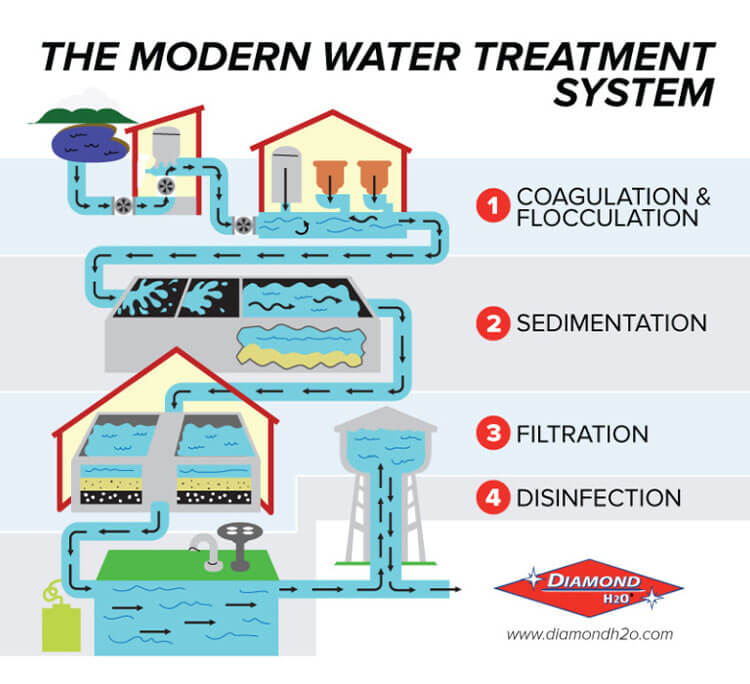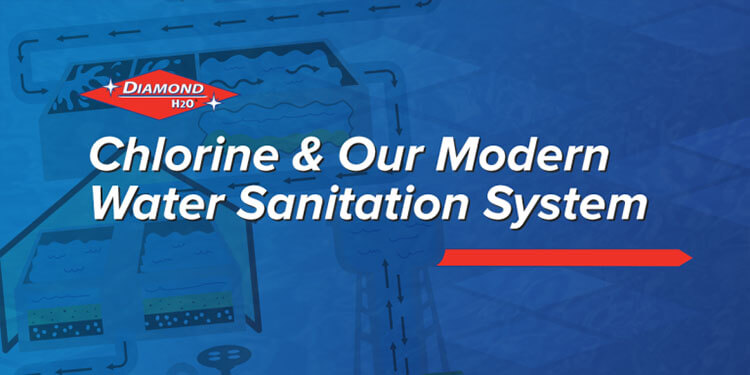The water that flows from your faucet has undergone a thorough journey before reaching your home, encountering a variety of potential contaminants along the way. Fortunately, modern water treatment systems are designed to clean and purify this water, ensuring it’s safe to drink.
Let’s break down water treatment, why it’s important, and also what you can expect from a modern water treatment service:
The History of Water Treatment
As early as Ancient Greece, people transported water into cities for essential needs like drinking, washing, and bathing. However, it wasn’t until the Enlightenment period that humanity began to understand the importance of filtering and treating water to prevent the spread of disease.
For centuries, untreated water was responsible for widespread illnesses, but scientists eventually learned how to tackle this issue.
In the late 19th century, researchers discovered that chlorine could effectively kill harmful germs in water. By 1903, water treatment plants began using chlorine on a large scale to disinfect water before it reached homes.
Today, chlorine remains one of the most commonly used disinfectants in water treatment, helping to ensure the safety of our drinking water.
GET YOUR HOME WATER ANALYSIS!Modern Water Treatment
How does modern water treatment at Diamond H2O® work? Modern water treatment involves four key steps, including coagulation/flocculation, sedimentation, filtration, and disinfection:

1. Coagulation and Flocculation
The first step is coagulation and flocculation. In this first step, chemicals with a positive charge are added to the water, neutralizing the negative charge of dirt and other particles. These particles then bind together to form larger clumps called “floc.”
2. Sedimentation
The floc settles at the bottom of the water supply, separating it from the cleaner water above.
3. Filtration
The clear water on top is passed through filters made of sand, gravel, and charcoal. These filters remove dust, parasites, bacteria, viruses, and other unwanted substances.
4. Disinfection
Finally, disinfectants such as chlorine or chloramine are added to kill any remaining parasites, bacteria, or viruses. This final step ensures the water is safe for human consumption.
The Role of Chlorine in Disinfection
Chlorine has been a key player in water disinfection since the 1800s, especially in Europe. It effectively kills harmful contaminants, making water safer to drink. Although excessive chlorine exposure can be harmful, the amounts used in water treatment are carefully regulated.
When chlorine is added to water, it spreads evenly throughout, resulting in low concentrations that are both safe for consumption and effective at eliminating germs.
Chlorine in Water: Key Facts
- Chlorine levels up to 4 milligrams per liter (4 ppm) are considered safe for drinking water.
- Chlorine was first used as a primary disinfectant in 1908 in Jersey City, New Jersey.
- By 1995, about 64% of all community water systems in the U.S. used chlorine to disinfect their water.
Contact Us for Water Treatment Services!
Trust the experts at Diamond H2O® for quality water treatment services. We have more than 85 years of experience dedicated to residential and commercial water treatment for the best quality water possible.
Contact us online, or give us a call at (920) 757-5440 or send us an email at info@diamondh2o.com. Our team is looking forward to serving you!
GET YOUR HOME WATER ANALYSIS!
